Oscar Medley-Whitfield and Harry Trimble at Designers in Residence 2012
Designers Oscar Medley-Whitfield and Harry Trimble have turned clay dug from the muddy banks of the river Thames into ceramic tableware (+ movie).
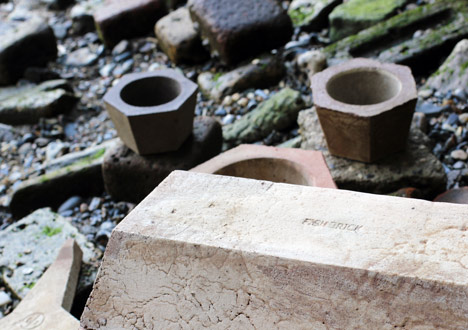
Recent graduates Oscar Medley-Whitfield and Harry Trimble produced the Wharfware collection for the Designers in Residence exhibition at the Design Museum. The movie is by Alice Masters.
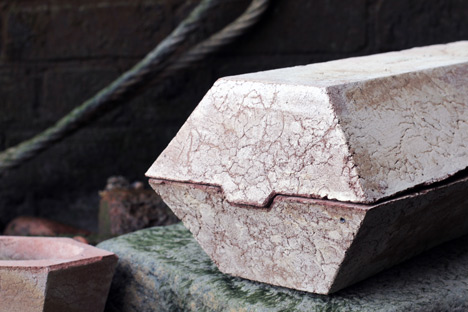
'Thrift for us is essentially making something out of nothing," says Trimble in the movie. Looking at the museum's surroundings to see what they could take from the local area, the designers found that the mud under Tower Bridge had the potential to be made into ceramics, and the area had also been home to a thriving ceramics industry 300 years ago.
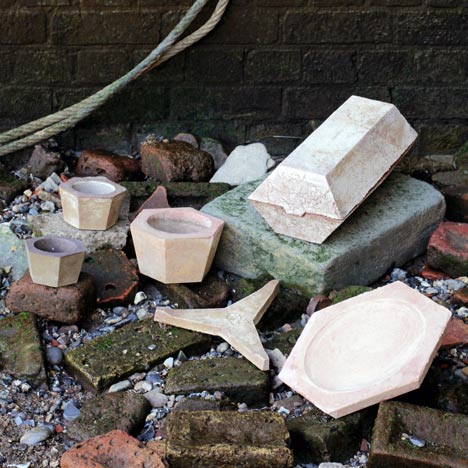
Once they'd dug up the mud and brought it back to their studio, they experimented with additives to prepare the clay for firing.

Above: photograph is by Carol Sachs
"Conventionally, pottery clays are heavily engineered with additives to give them specific properties," they told Dezeen. "Wishing to keep the clay pure and stay true to the brief, we devised a manufacturing technique of moulding at high pressure."
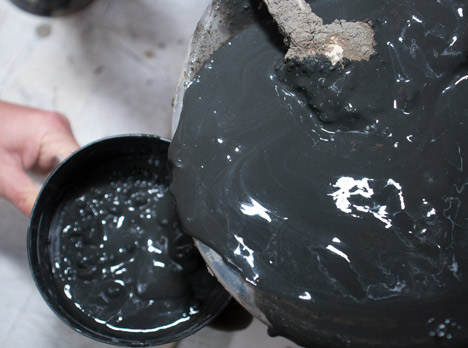
Above: photograph is by Rima Musa
After perfecting the mixture, they formed the shapes in a homemade press, using a car jack to push the clay into its mould. Inspired by centuries-old tableware made in the Tower Bridge area and wanting to maximise space in the kiln, they created the pieces in tesselating hexagonal shapes.
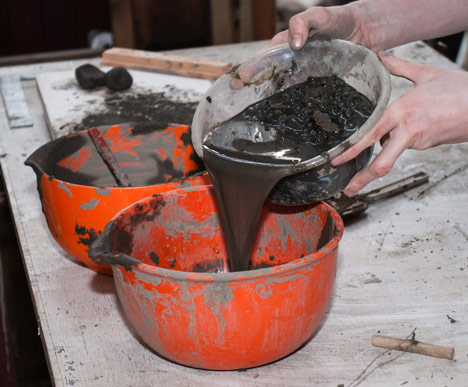
Above: photograph is by Rima Musa
The Wharfware collection includes three sizes of bowls, a serving plate, a trivet and a fish brick, which pays homage to Terence Conran's chicken brick steam cooker, explains Medley-Whitfield, while also referencing the clay's origins in the river Thames.
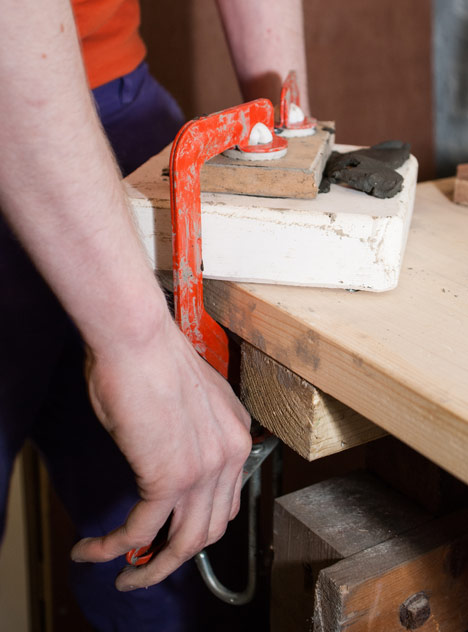
Above: photograph is by Rima Musa
Last year Medley-Whitfield experimented with casting copper-bullion bowls as a way for investors to display the increasingly valuable metal at home.
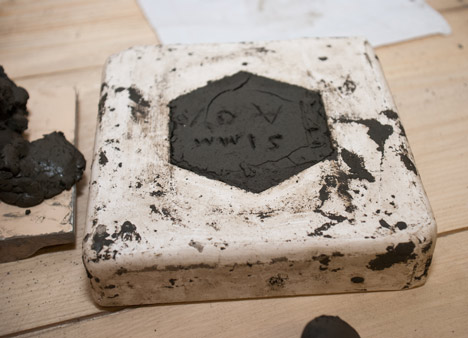
Above: photograph is by Rima Musa
We've already featured two movies by Alice Masters about the Designers in Residence programme – in one, Lawrence Lek shows how his system of bent plywood pieces can be tied together to make furniture and architecture, and in another, Yuri Suzuki explains how he made a radio with a circuit board arranged like the London Tube map.
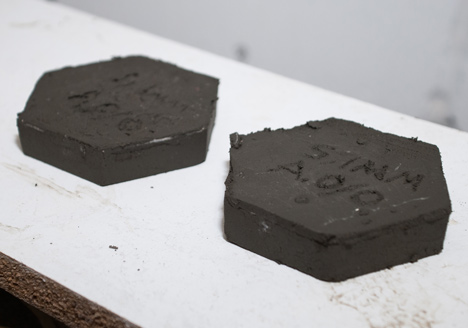
Above: photograph is by Rima Musa
See all our stories about ceramics »
See all our stories about Designers in Residence 2012 »
See all our stories about the Design Museum »
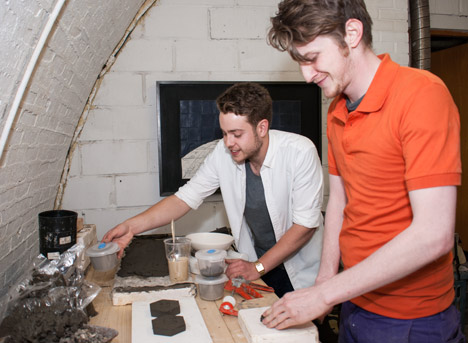
Above: photograph is by Rima Musa
Photographs are movie stills by Alice Masters, except where stated.
Here's some more information from Medley-Whitfield and Trimble:
Designers Oscar Medley-Whitfield and Harry Trimble Share an interest in sourcing local materials and using bespoke manufacturing processes. Together they experiment with how products can be made to embody local identity and heritage to give economic, environmental and emotional benefits.
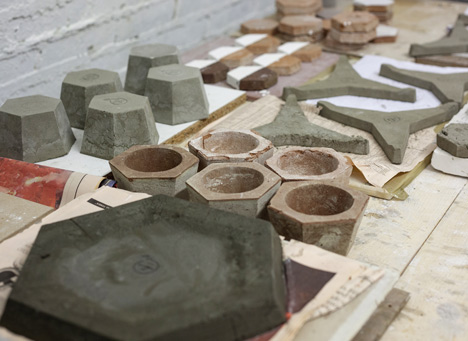
Above: photograph is by Carol Sachs
Inspired by the historic Southwark ceramic industry that thrived in the area surrounding the Design Museum 300 years ago, Oscar and Harry have produced a ceramic tableware range, Wharfware, made of clay dug from the banks of the Thames around Tower Bridge.
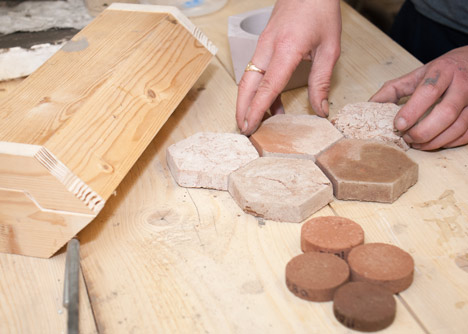
Above: photograph is by Rima Musa
Before the clay could be used it had to undergo an extensive refinement process. The clay is laid out to dry before being soaked to a slip. It is then passed through progressively fine grades of mesh to remove impurities.
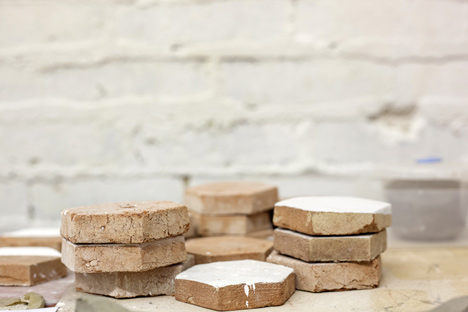
After further drying on plaster to achieve the desired consistence, the clay is ready to be moulded and then fired. A complex testing process was used to find the right composition of clay, sand and firing temperature.
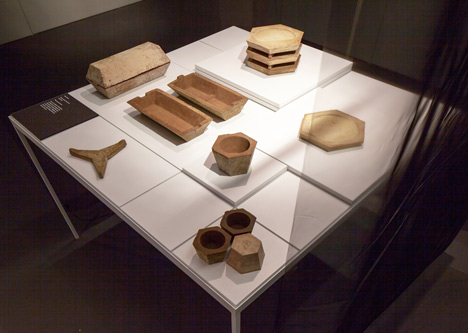
Above: photograph is by Luke Hayes
The forms of the works were process driven. Rather then using traditional studio pottery techniques unlikely to work with the unpredictable raw clay, Oscar and Harry applied an industrial approach. The moulds were designed to allow the clay to be shaped under pressure reducing the likelihood of warping and distortion.
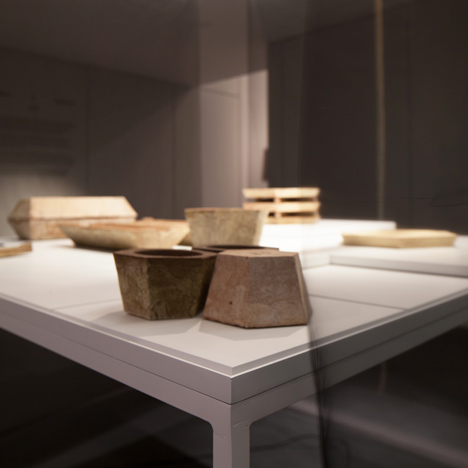
Above: photograph is by Luke Hayes
The geometric shapes help the pieces to be easily remove from the moulds whilst also allowing them to tessellate in the kiln meaning more units per firing, bring down overall costs. In creating Wharfware, Oscar and Harry have created a locally relevant product in an innovative and resourceful way.
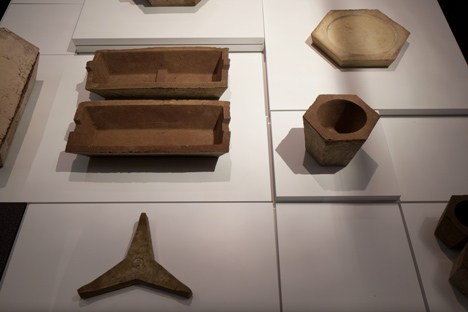
Above: photograph is by Luke Hayes